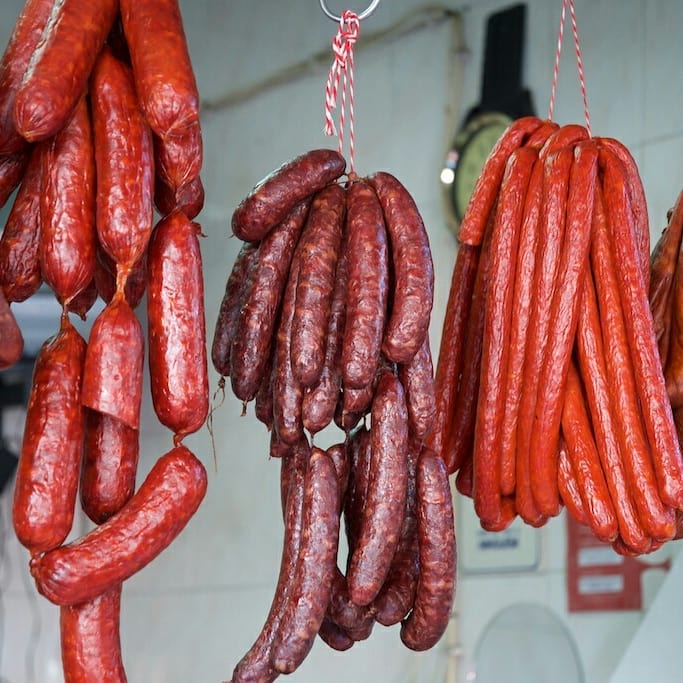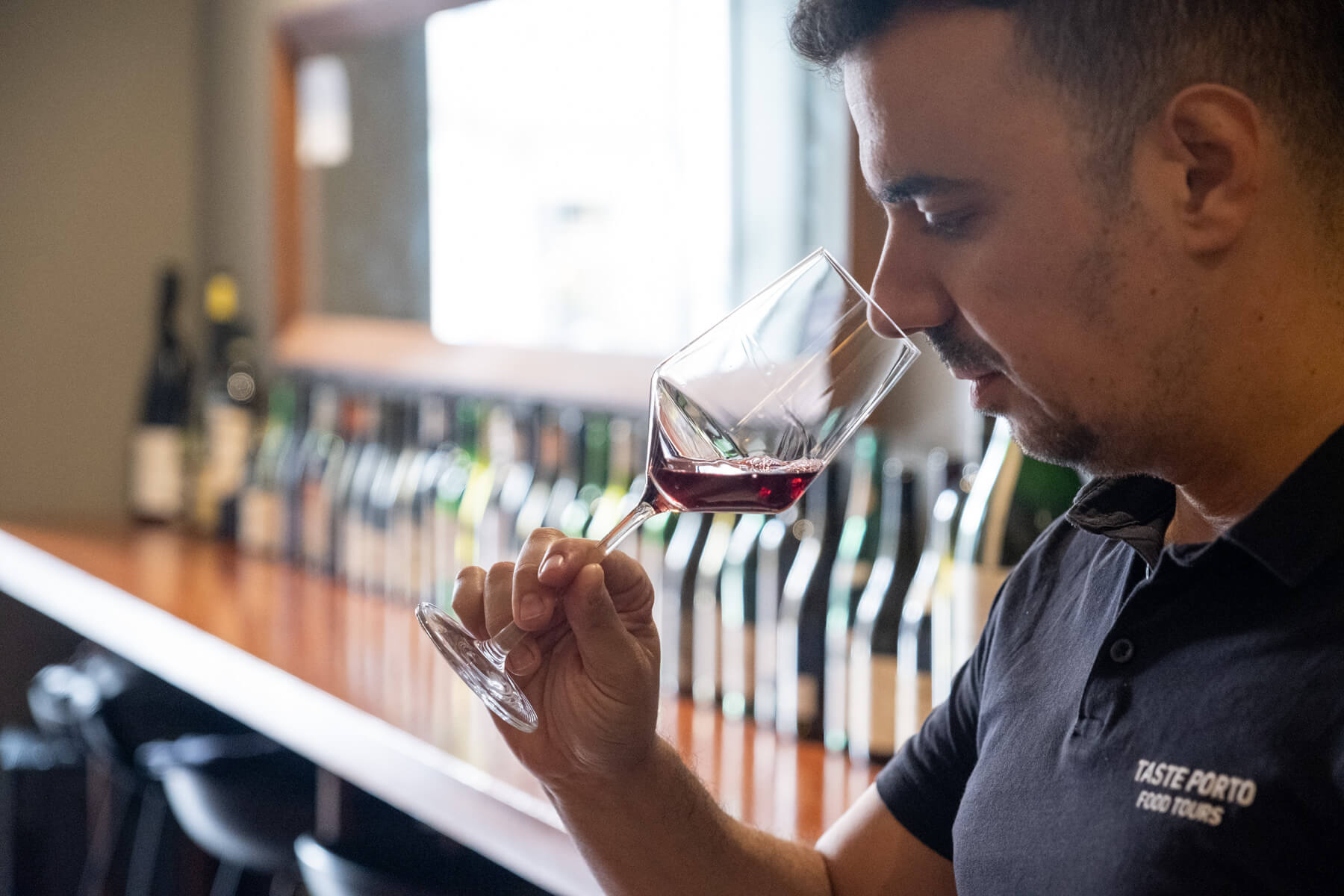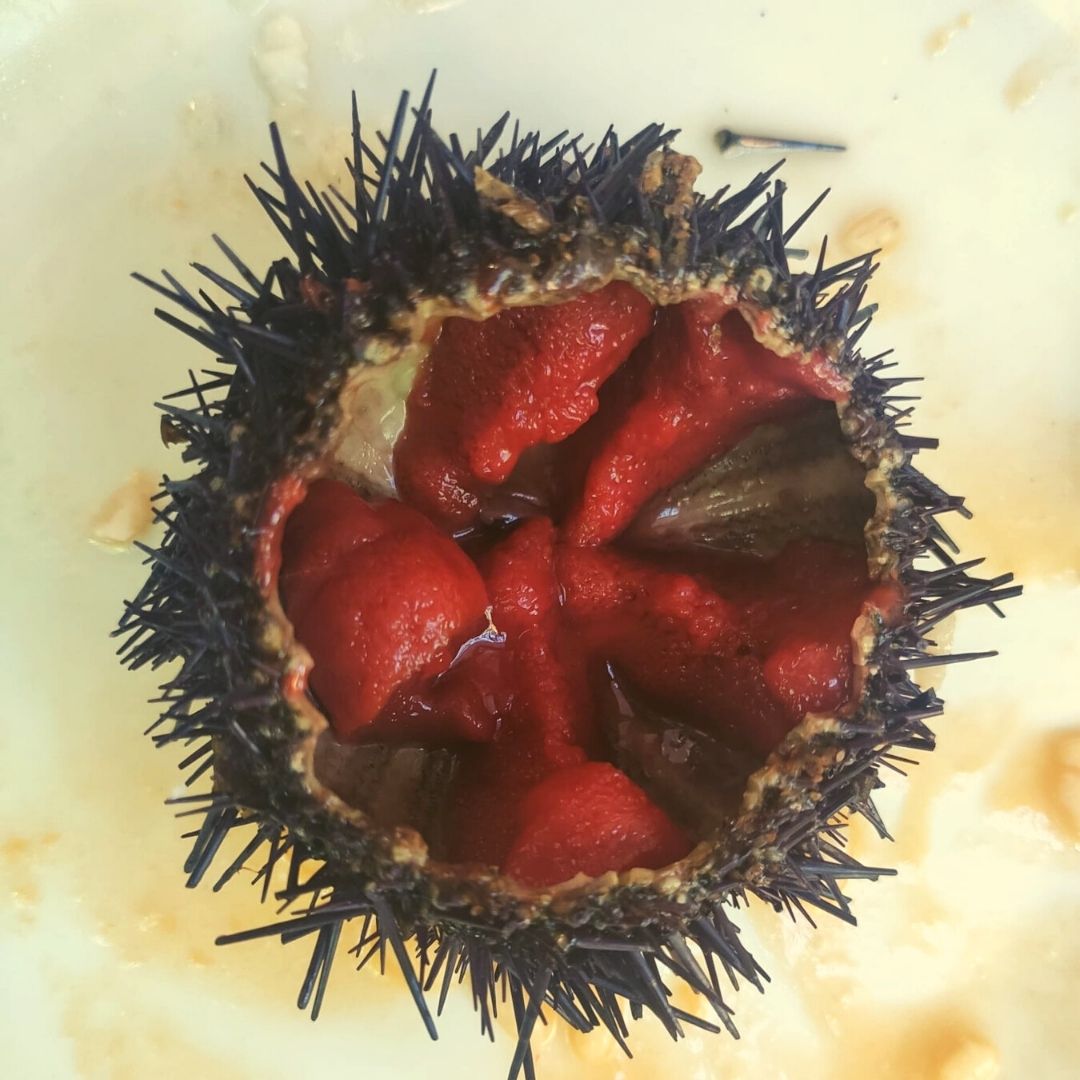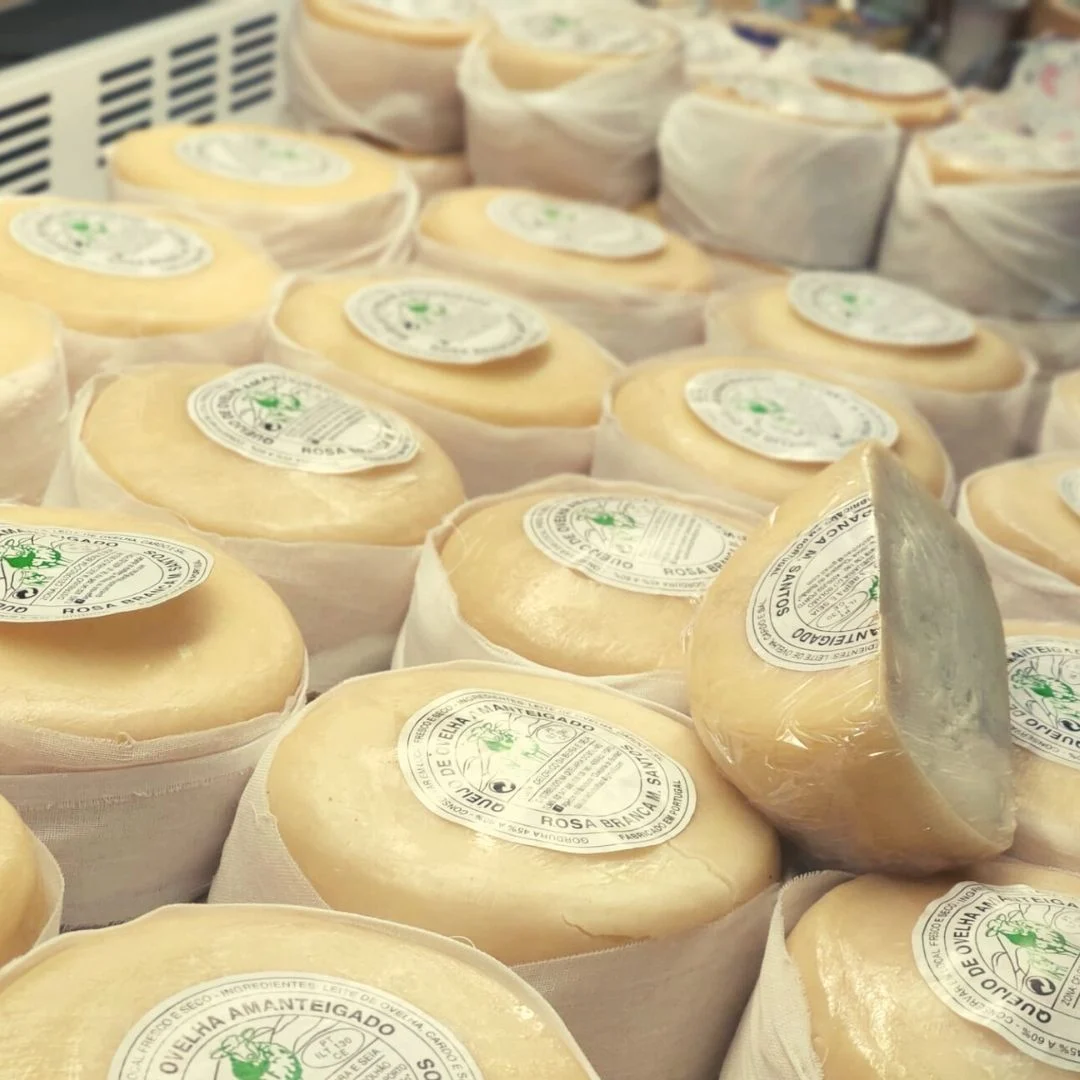
Portugal makes any cheese lover’s dreams come true. One can find amazing portuguese cheeses throughout the country – from north to south, and let’s not forget the islands. So today we’ve decided to share 10+ Portuguese cheeses that you have to try before you die. We invite you to take one of our Porto Food Tours if you want to sample some of these Portuguese cheeses from one of the best Queijarias (cheese shops) in town.
Everything is fine when you have cheese and wine
Just like wine, every region in Portugal has its own cheese. And just as Portuguese wines have protected designation of origin labels, so do Portuguese cheeses. In fact, we had a look and there are 10+ Portuguese cheeses with PDO designations (PDO stands for Protected Designation of Origin). This label ensures that these slow-food products are produced within the demarcated area and according to old artisanal prescriptions. Stick around, we’ll tell you more about our favorite national cheeses.
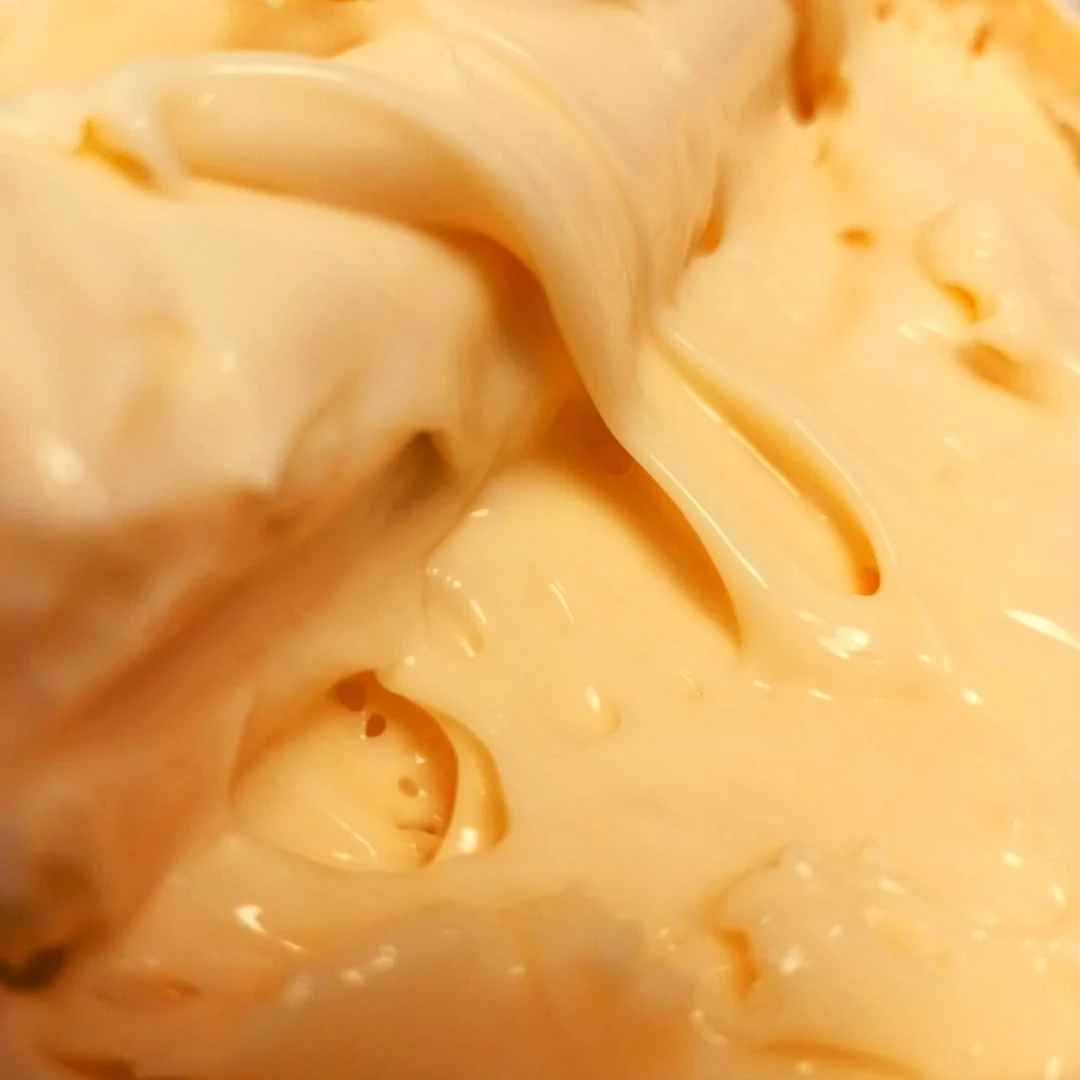
Famous portuguese cheeses
What is a good Portuguese cheese? How many different cheeses are there? Are there any vegetarian cheeses in Portuguese gastronomy? We put together a list of 10+ national cheeses, including Portuguese cheese names and tips on how to eat them. Authenticity: guaranteed!
1. Serra da Estrela cheese
Serra da Estrela cheese is one of Portugal’s oldest and most traditional products. It is produced in the mountains that are located in the beautiful region of Serra da Estrela. The milk used comes from sheep, but not any sheep – they must be raised in that region in order for the Serra da Estrela cheese to receive the PDO classification. Let’s (literally) dig in!
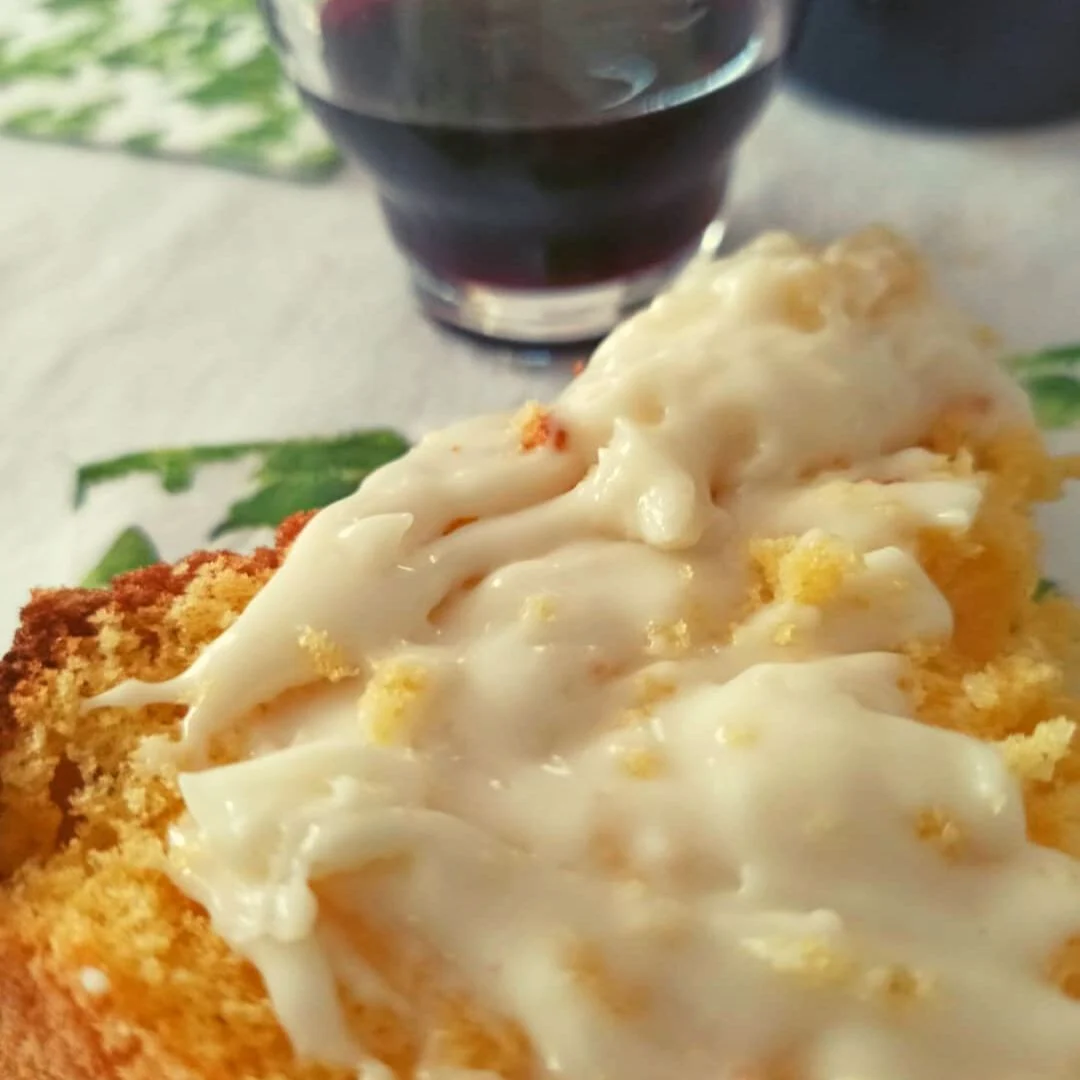
- Portuguese cheese name: Queijo Serra da Estrela;
- Cheese type: Sheep’s milk cheese (creamy, buttery and very smelly);
- Region: Serra da Estrela, in the central region of Portugal;
- How to eat Serra da Estrela cheese: It depends on who you ask. In the north of the country, people make a hole in the top of the shell and take some of it with a spoon. It is a spreadable cheese. Serra da Estrela locals simply slice it and eat it (rind and all);
- Vegetarian: Yes;
- Curiosities: In 2014, the Serra da Estrela cheese was added to the Ark of Taste, a living catalog of delicious and distinctive foods facing extinction. This catalog is maintained by the global Slow Food movement.
2. Azeitão cheese
Azeitão cheese is also on the list of portuguese creamy cheeses, produced from pure raw sheep’s milk in Azeitão, a village less than one hour from Lisbon.
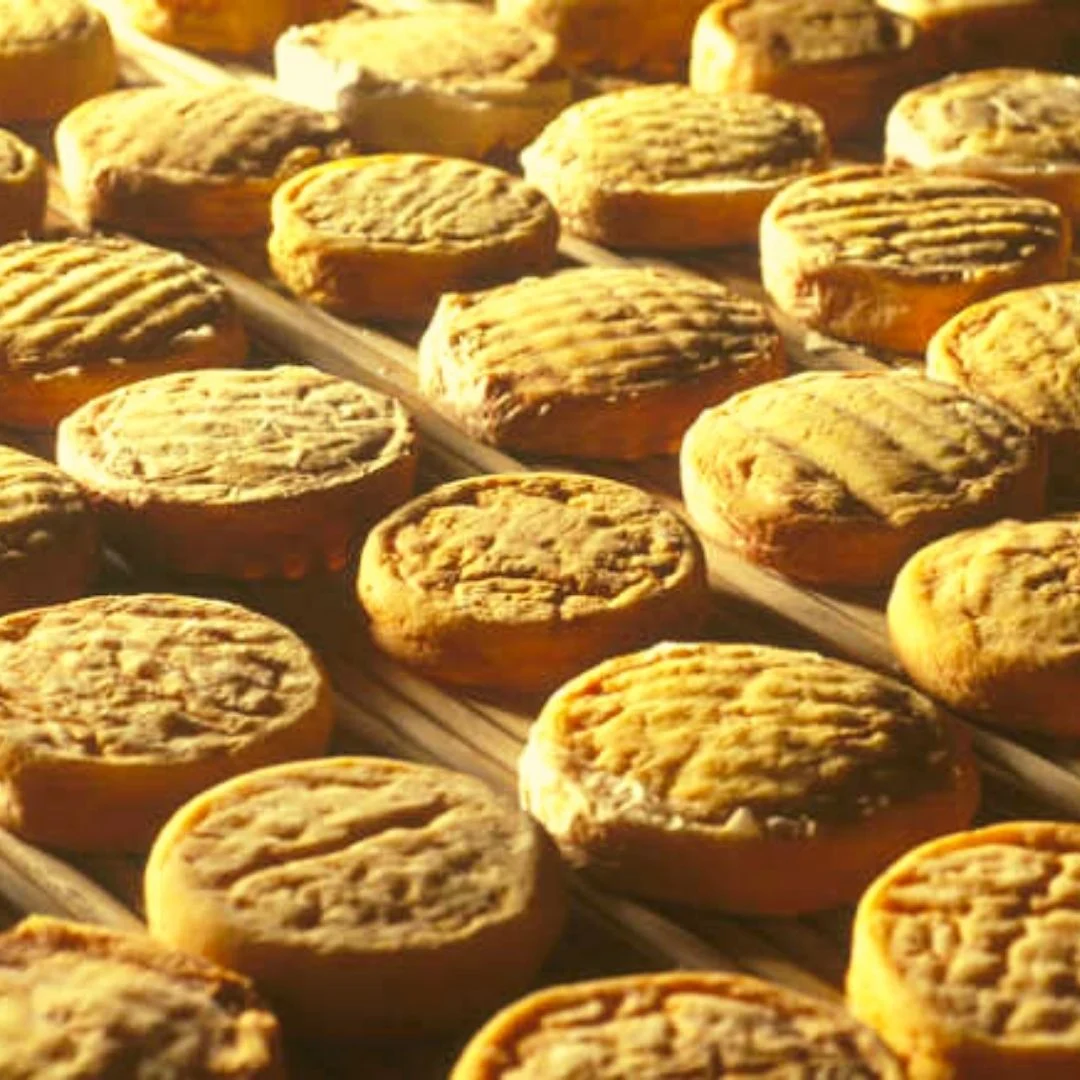
- Portuguese cheese name: Queijo de Azeitão;
- Cheese type: Sheep’s milk cheese (creamy as Serra da Estrela cheese, but milder in flavor);
- Region: Azeitão, located in the south-west of Portugal;
- How to eat Azeitão cheese: Make a hole in the top of the shell, grab a spoon and enjoy. Goes hand-in-hand with toast;
- Vegetarian: Yes;
- Curiosities: Azeitão cheese is a good option for vegetarians because it uses thistle flower instead of rennet.
3. Transmontano Goat Cheese
Transmontano Goat cheese comes from the northern region of the country (Trás-os-Montes) – hence the name. It is a hard white cheese made from goat milk and it’s so delicious that we’re drooling already.
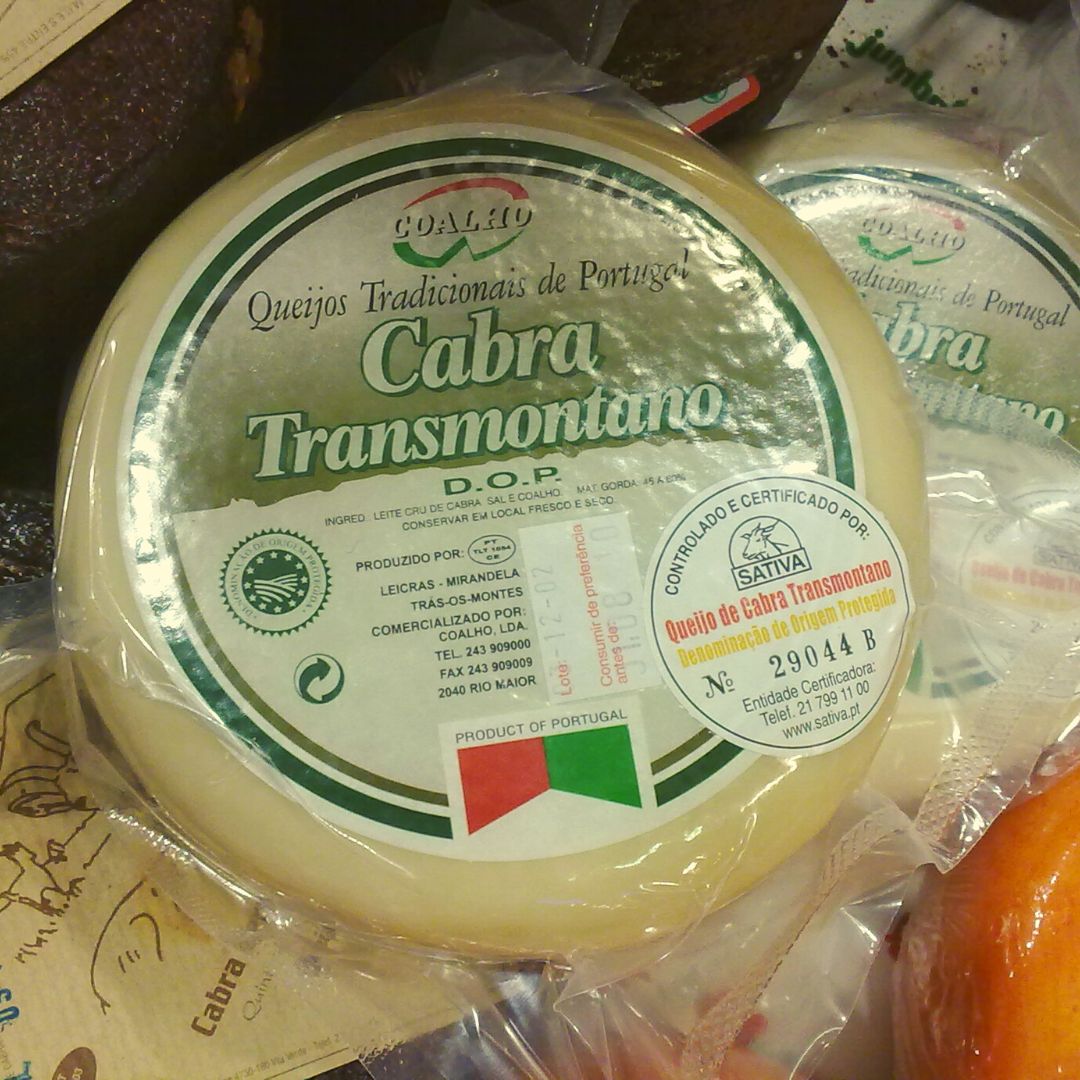
- Portuguese cheese name: Queijo de Cabra Transmontano;
- Cheese type: Goat’s milk cheese (hard with a light peppery touch);
- Region: Northeastern corner of the country;
- How to eat Transmontano Goat Cheese: Cut it into thin slices; it goes very well with berry jam;
- Vegetarian: No;
- Curiosities: The longer it ages, the spicier it gets.
4. Évora Cheese
Merino is a type of sheep breed that graze freely in the pastures of the Évora region. Its milk originates the amazing Évore cheese. It comes as no surprise: happy sheep offer, in turn, amazing cheeses. It’s often used to flavor a salad, because of its high salt content.
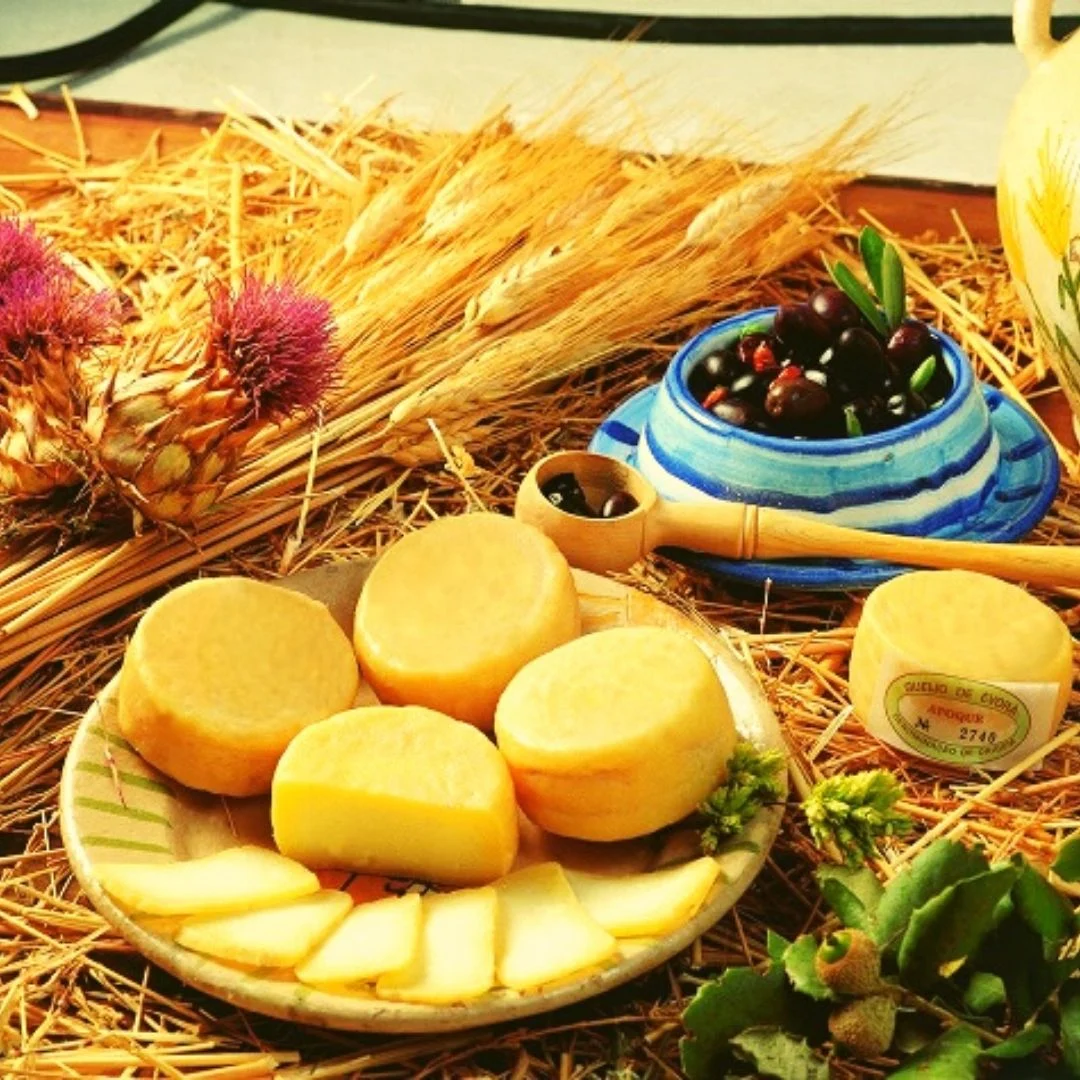
- Portuguese cheese name: Queijo de Évora;
- Cheese type: Sheep’s milk cheese (semi-hard cheese, slightly sour and salty);
- Region: Southern Portuguese region of Alentejo;
- How to eat Évora cheese: It’s a staple in the couvert served in restaurants in the area, as a little amuse bouche alongside some tangy olives and typical sourdough bread;
- Vegetarian: No;
- Curiosities: You can eat the whole cheese, including the rind.
5. Nisa cheese
Nisa cheese is made in the northern part of the Alentejo region. It’s a semi-hard cheese made from raw sheep’s milk, often used in the preparation of quiches.
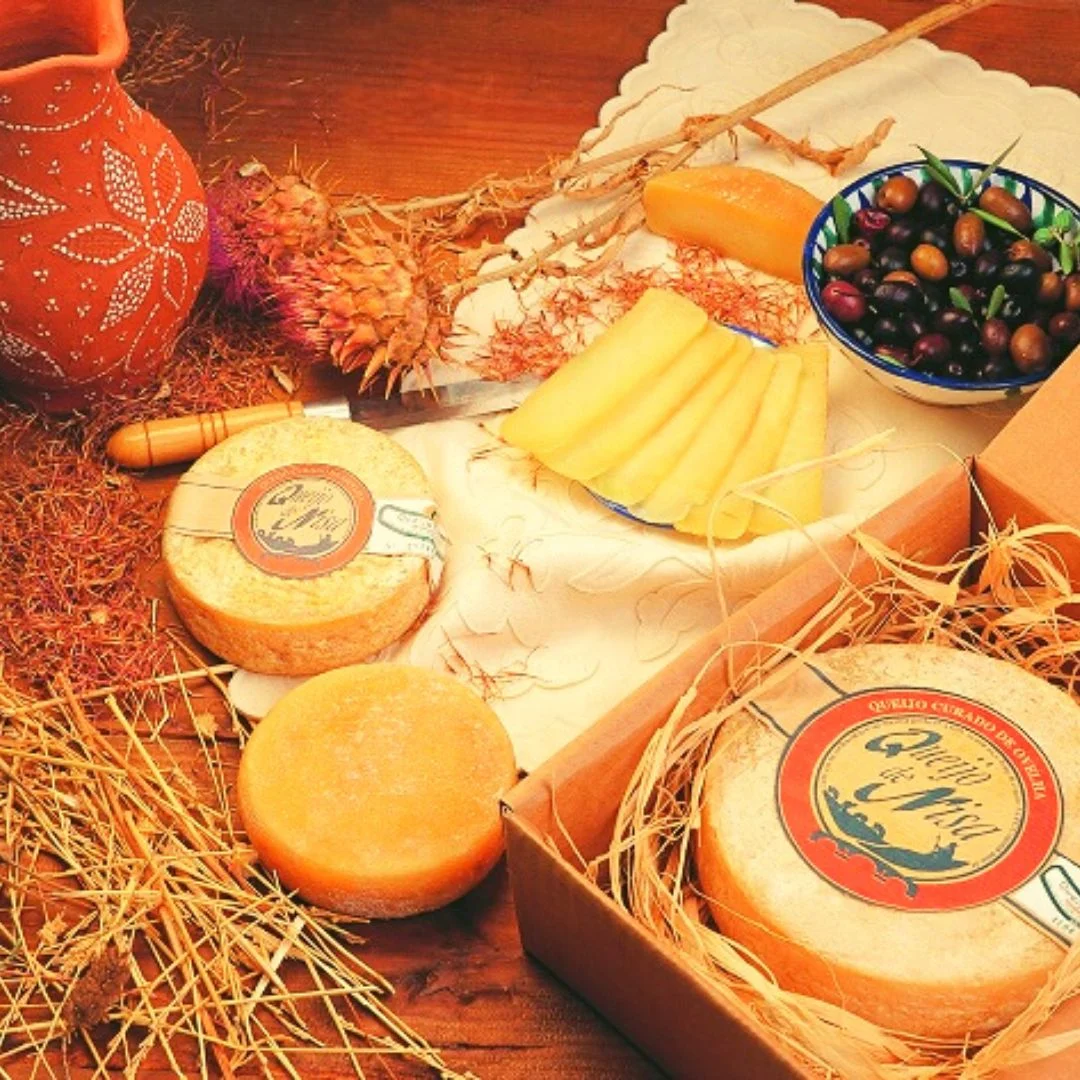
- Portuguese cheese name: Queijo de Nisa;
- Cheese type: Sheep’s milk cheese (semi-hard cheese wih a sweet taste and a slight hint of walnuts);
- Region: Alentejo;
- How to eat Nisa cheese: We are no doctors but we know that adding this cheese to anything makes it an anti-depressant;
- Vegetarian: Yes (it uses thistle flower instead of rennet);
- Curiosities: Back in 2008, the Wine Spectator magazine listed Nisa cheese as one of the 100 best cheeses in the world.
6. S. Jorge cheese
It’s the Portuguese Parmeggiano. Also known as Island cheese (Queijo da Ilha). S. Jorge cheese comes from the beautiful island of São Jorge in the Azores – hence the name. This Portuguese cheese is made (exclusively) of unpasteurized cow’s milk.
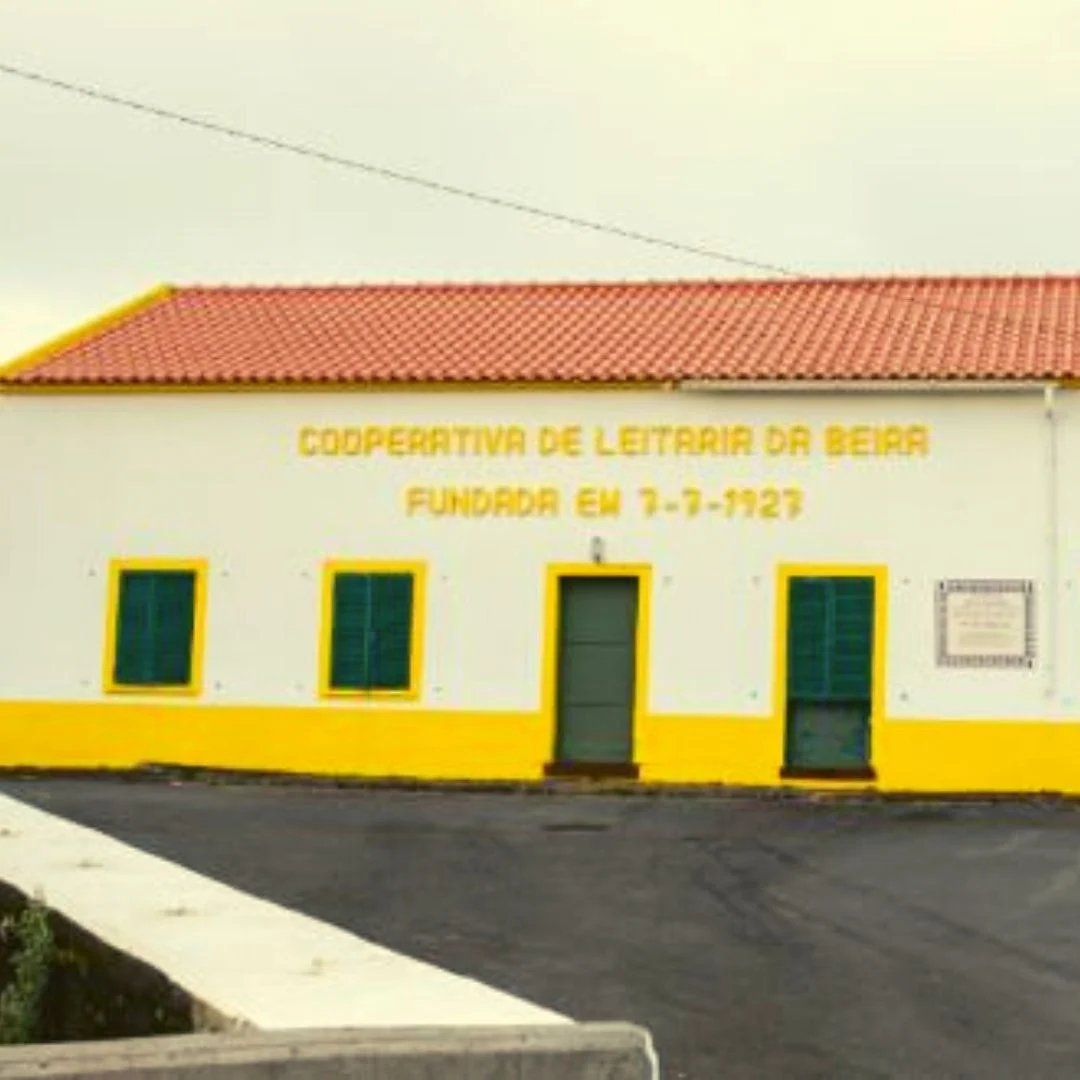
- Portuguese cheese name: Queijo S. Jorge;
- Cheese type: Cow’s milk cheese (semi-hard and slightly spicy);
- Region: Azores islands;
- How to eat S. Jorge cheese: Best flavor enhancer! We love to shred it over pasta;
- Vegetarian: No;
- Curiosities: S. Jorge cheese production began around 500 years ago (in the factory above).
7. Pico cheese
Round, flat, with a very intense aroma, Pico cheese has been produced exclusively on the island of Pico in the portuguese Azores. Pico cheese is made of cow’s milk with the addition of goat’s milk.
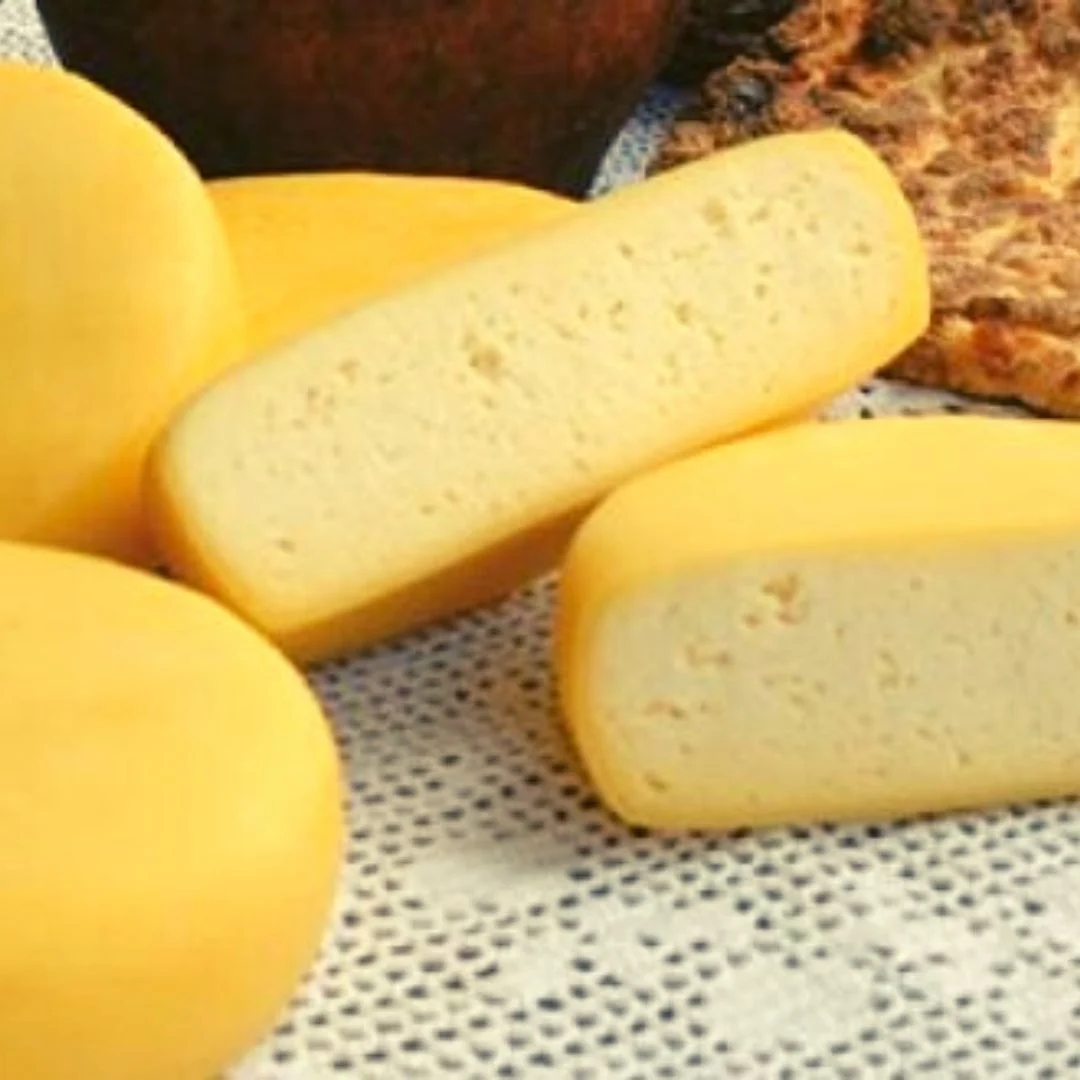
- Portuguese cheese name: Queijo do Pico;
- Cheese type: A blend of cow and goat’s milk cheese (salty, with a strong smell, but softer than São Jorge cheese);
- Region: Azores islands;
- How to eat Pico cheese: As a starter or for dessert, you can’t go wrong with Pico cheese;
- Vegetarian: No;
- Curiosities: This recipe has been passed down from generation to generation since the end of the 18th century.
8. Serpa cheese
Another award-winning cheese from Alentejo. Serpa cheese is produced in the district of Beja, in eastern Portugal. Serpa cheesemakers brush the rind of Serpa cheese with olive oil and paprika which gives it a spicy flavor.
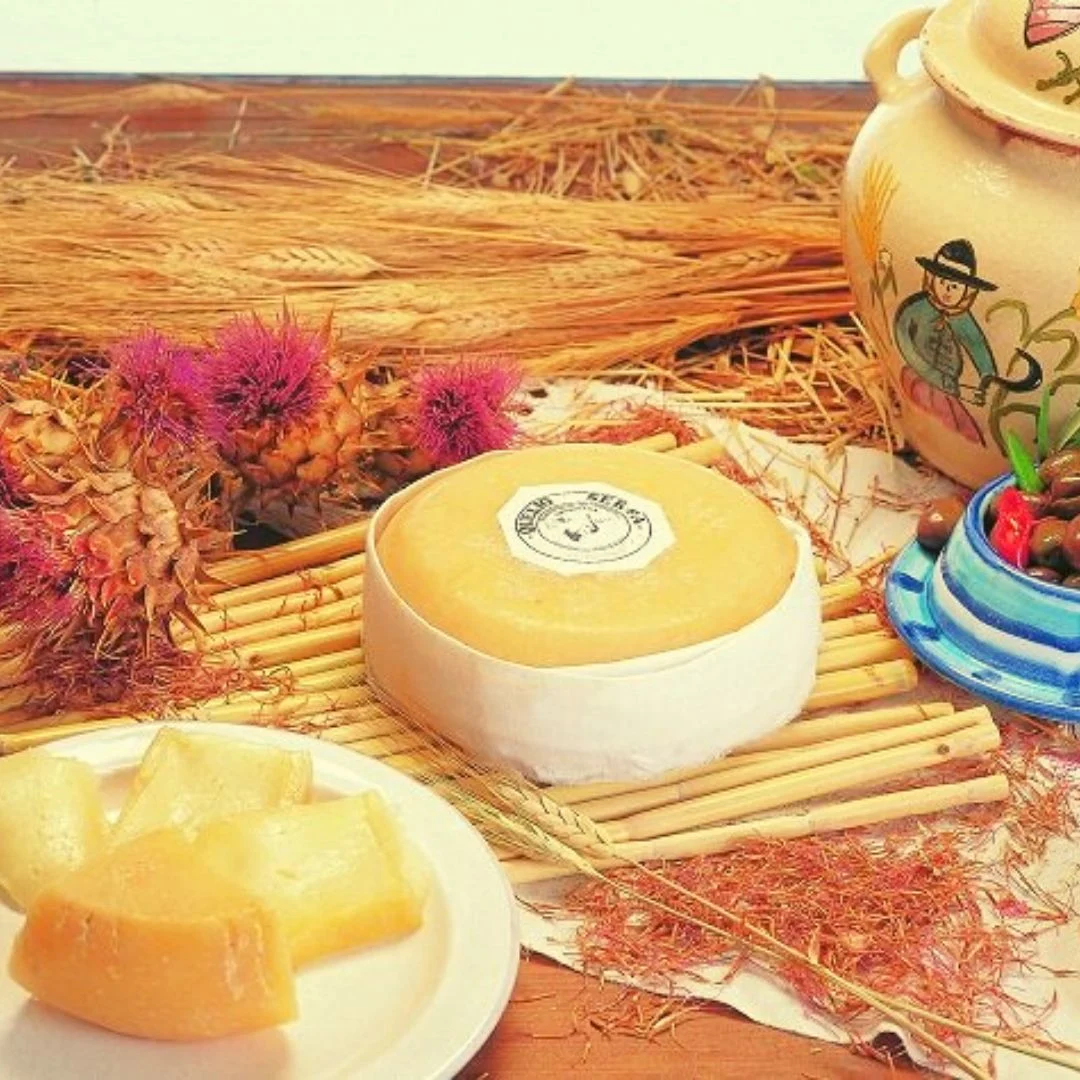
- Portuguese cheese name: Queijo Serpa;
- Cheese type: Sheep’s milk cheese (smelly, with a hint of Portuguese paprika);
- Region: Alentejo;
- How to eat Serpa cheese: Serve it with some Alentejo bread;
- Vegetarian: No;
- Curiosities: This cheese can range from creamy (amanteigado) to hard (duro) depending on the age.
9. Rabaçal cheese
Rabaçal combines sheep and goat’s milk (two-thirds sheep milk to one-third goat milk). The original recipe comes from a small village located near Coimbra.
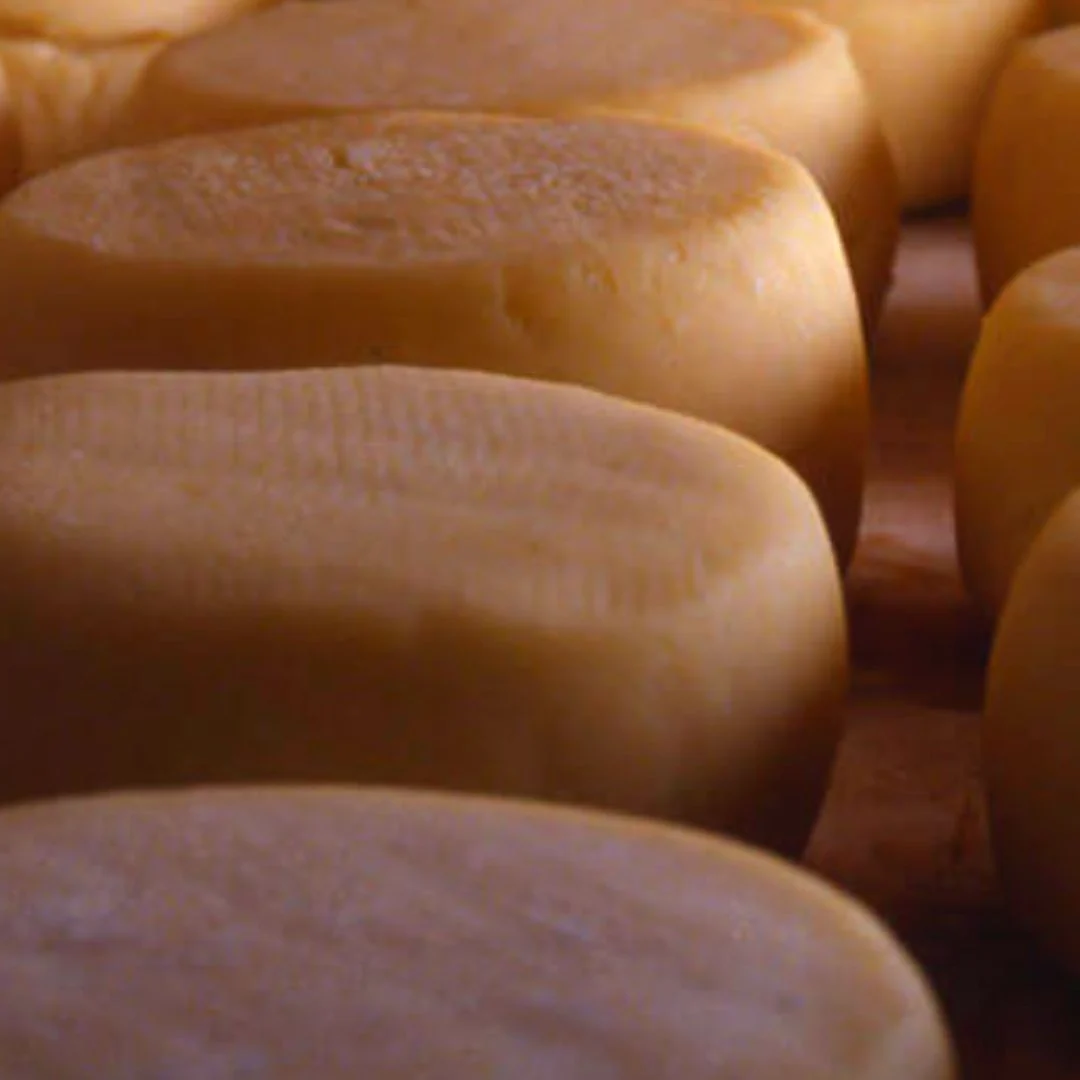
- Portuguese cheese name: Queijo Rabaçal;
- Cheese type: A blend of goat and sheep’s milk cheese (semi-hard texture and a smooth flavor);
- Region: Rabaçal, center of Portugal;
- How to eat Rabaçal cheese: drizzled with some honey;
- Vegetarian: No;
- Curiosities: The texture can vary from semi-hard to hard, depending on the curation process.
10. Terrincho cheese
If mild is how you like it, then you have to try Terrincho Cheese. This semi-hard cheese uses the milk of Churra da Terra Quente breed of sheep, which graze on the grasslands of Terra Quente in the municipalities of Bragança.
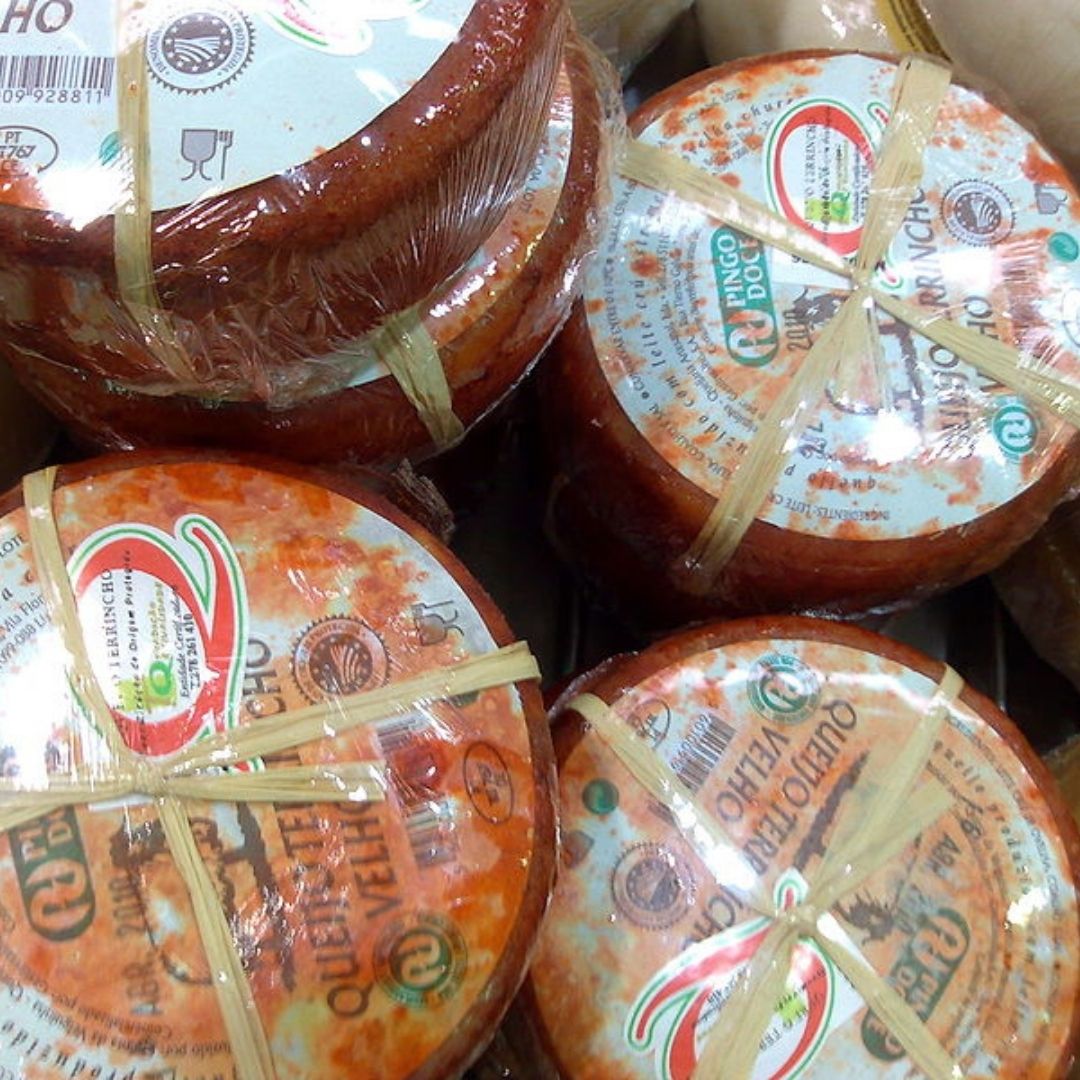
- Portuguese cheese name: Queijo Terrincho;
- Cheese type: Sheep’s milk cheese (mild flavor and creamy consistency);
- Region: Northeastern corner of the country;
- How to eat Terrincho cheese: Delicious whether eaten alone or paired;
- Vegetarian: No;
- Curiosities: For a more intense flavour, look for Terrincho Velho.
11. Tolosa cheese
Everyone should have a block of Tolosa cheese somewhere in the fridge. It’s a mature cheese that combines milk from goat and sheep in the proportions of 20 to 80%, 40 to 60%, and 60 to 40%. That’s why is called “mestiço”. The flavor is reasonably strong, clean, and spicy. The aroma is pleasant and very distinctive.
- Portuguese cheese name: Queijo mestiço de Tolosa;
- Cheese type: A blend of goat and sheep’s milk cheese (strong and spicy);
- Region: Alentejo;
- How to eat Tolosa cheese: Cut it in slices and enjoy;
- Vegetarian: No;
- Curiosities: This cheese-making process began between 1901 and 1905.
Where can I buy Portuguese cheeses
Many Portuguese cheeses are unpasteurized, making them difficult to find outside Portugal. This is precisely why cheese enthusiasts should consider adding Porto and Portugal to their must-visit destinations. For those unable to travel to Portugal, these delicacies can sometimes be sampled at Portuguese food markets worldwide. Additionally, when dining in Portugal, these national cheeses are often paired with Portuguese sausages on mixed charcuterie boards, offering a delicious pre-meal experience.
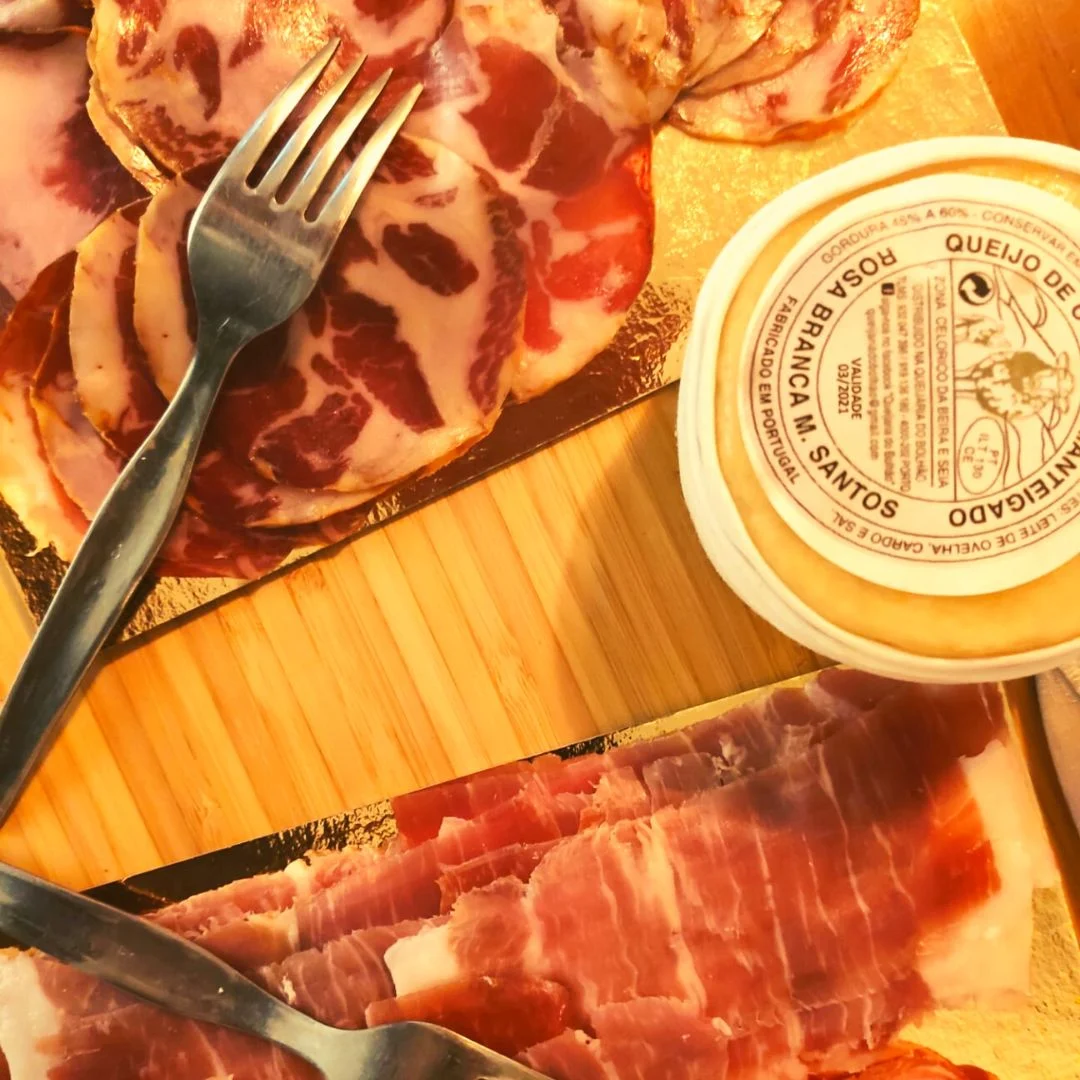
PS: Here are a few Portuguese words that will come in handy when picking the Portuguese cheese that suits you best:
- Cheese – Queijo
- Sheep – Ovelha
- Goat – Cabra
- Cow – Vaca
- Fresh – Fresco
- Cured/Aged – Curado
- Smooth flavor – Sabor Suave
- Strong flavor – Sabor Forte
If you reached this part of the blog post, we just want to thank you and inform you of what you already now: Yes, you were probably a mouse in your previous life.
Didn’t find the information you want?
We’re happy to answer any questions you may have. Feel free to drop us an email at [email protected]. Or join our Downtown & Bolhão Market Food Tour and learn about Porto’s rich history and architecture while savoring Porto’s traditional foods (Portuguese cheeses included). One bite a a time!
Warm Foodie Regards,
Taste Porto Foodie Team
